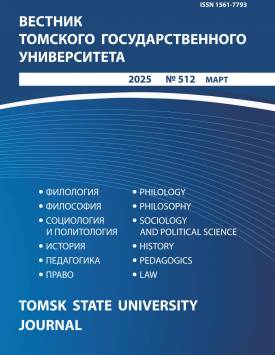Preservation of university students' cultural identity by means of physical culture and sports
Cultural identity is the attitude of a person towards oneself, other people, and society. The substantiation of the role of physical culture and sports in preserving the cultural identity of university students becomes interesting for us, since sports and national sports provide opportunities to come into contact with the language, customs, and traditions of the region, the republic. Thanks to physical culture and sports, through physical culture and recreational activities (non-traditional sports, national sports, folk games), students have the opportunity not only to acquire sports skills and abilities, but also to strengthen friendship and interaction between students of different nationalities. This paper presents an analytical study of concepts such as "culture", "personal culture", and "cultural identity", and examines the classification of national sports and traditional athletic games of Russia. A survey was conducted among students from various regions of Russia on issues related to the development of physical culture and sports, the organization of national sporting events and festivals, as well as traditional games and competitions. Among the key characteristics of cultural identity, the following were highlighted: conscious self-identification with a specific cultural group through adherence to traditions and customs, and an individual's awareness of belonging to a particular cultural community. According to the students, national sports include those that originated in or are most popular in a specific region, such as mas-wrestling (Yakutia), stone lifting (Khakassia), kereu wrestling (Chuvashia), lapta (Veliky Novgorod), dog sled racing (Kamchatka), and hunting ski races (Komi). The implementation of sports and national physical culture projects among student youth contributes to the formation of traditional, moral, cultural, and spiritual-ethical values. A focus of state youth policy on improving student health is an important strategic objective. Preparing students for future professional activities and fostering harmoniously developed individuals who are intellectually, psychologically, and physically healthy, and capable of communicating and collaborating with people of different nationalities, cultural backgrounds, and religions, contributes to the development of a competitive state. Cultural identity is a distinct phenomenon that strengthens an individual's historical, cultural, and traditional perspectives. National sports help preserve a person's cultural identity, as engagement in these activities introduces them to the history, customs, culture, traditions, and unique characteristics of a region, republic, or country. The author declares no conflicts of interests.
Keywords
university students, national sports, sports, physical education, culture, cultural identityAuthors
| Name | Organization | |
| Panchuk Natalya S. | Northwestern Branch of the Russian State University of Justice | p_natalya01@mail.ru |
References

Preservation of university students' cultural identity by means of physical culture and sports | Vestnik Tomskogo gosudarstvennogo universiteta – Tomsk State University Journal. 2025. № 512. DOI: 10.17223/15617793/512/22
